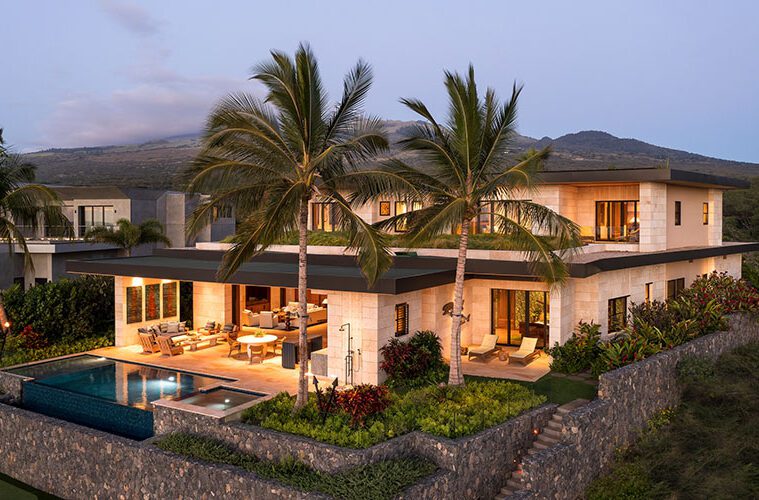The site may be small, but the views are stunning. On the southwest coast of Maui, architect Mark de Reus took advantage of a narrow, 102-foot-wide lot by directing the eye, through a 6,000-square-foot home, out to three small islands in the distance.
He kept his design simple. “One of the things I’ve learned to appreciate is that restraint is good,” he says. “There’s a lot of elegance that comes through simplicity—it’s a nice, elegant solution.”
He maximized visibility and the indoor/outdoor living experience by placing a pool and spa at the leading edge overlooking the Pacific. He added an open lanai adjacent to it and a covered lanai next to that. “They merge together in one large, luxurious space,” de Reus says.
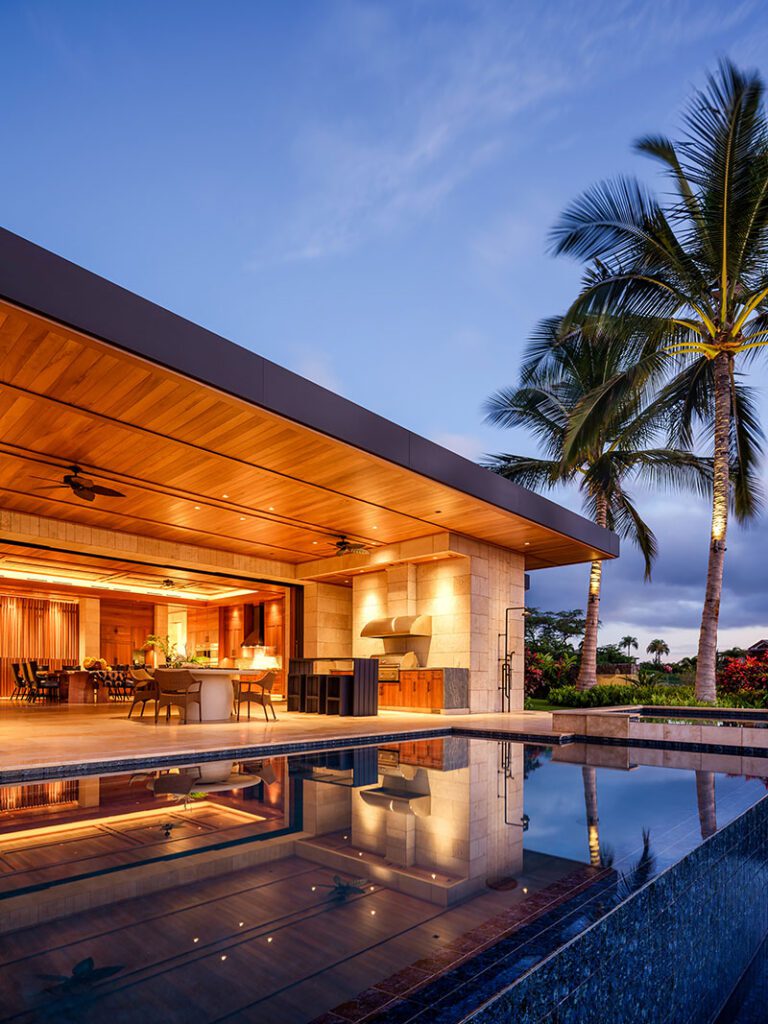

Behind the outdoor spaces are a casual living area, dining area, and kitchen. They integrate with the bigger lanai through sliding glass doors that disappear into walls. “The climate on that side of Maui means you can open it up and live in that luxurious air,” he says. “It’s one outdoor living area.”
The architect worked with land planner Don Vita of Vita Planning and Landscape Architecture, someone he’s collaborated with for 24 years, to address the lot. If one challenge was its narrowness, there were also the houses that flank it on either side.
“The view is directional,” Vita says. “We had to deal with that and make sure it’s interesting and take advantage of it in as many places inside the home as possible.”
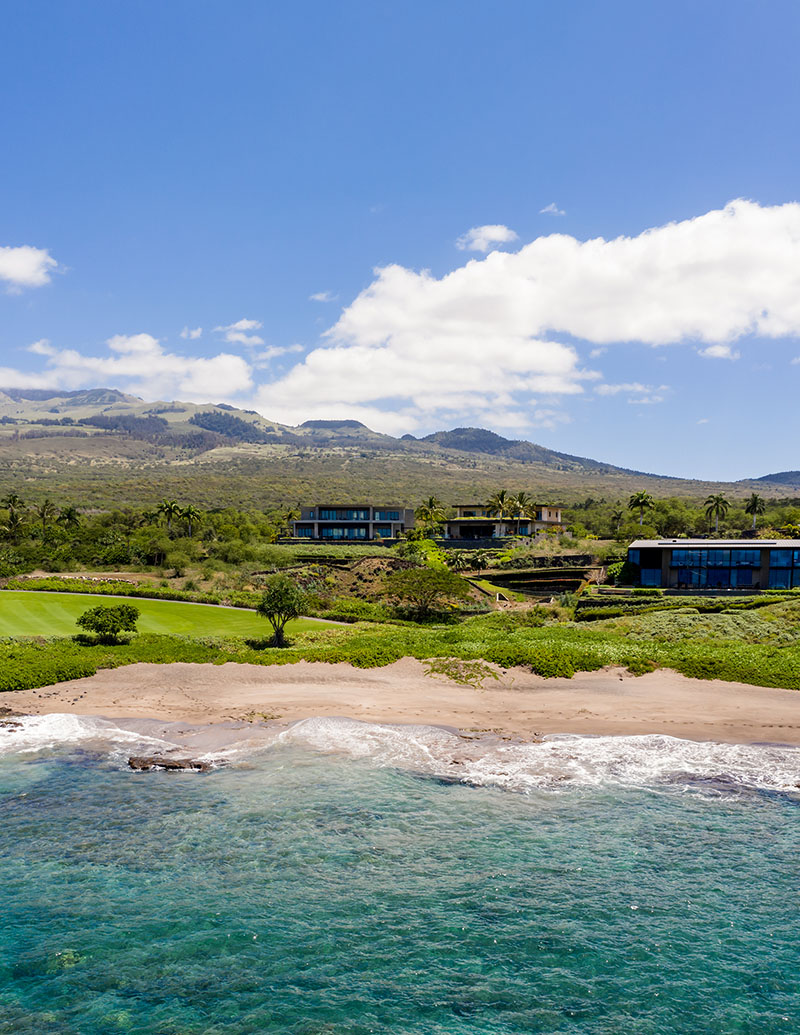

He placed plantings and walls strategically to block sound and sight to and from the homes next door. After all, people on Maui want to spend their time outside as much as possible, without a lot of visibility. “The climate is very nurturing: It feels just right for your skin, and there’s just enough salt spray in the air,” he says. “And the breezes are always there to moderate the temperature, so you end up living outside—and there’s a flow, inside to outside.”
The clients, a pair of attorneys from Sacramento, California, wanted a home that could double as an escape. They also wanted spaces that were not only easy to maintain but water-conscious, too, because the new house is on the dry side of the island. “There are northeast trade winds, so there’s a wet side and a dry side,” Vita says. “The dry side might get 10 inches of rain a year, but the other gets 115 inches.”
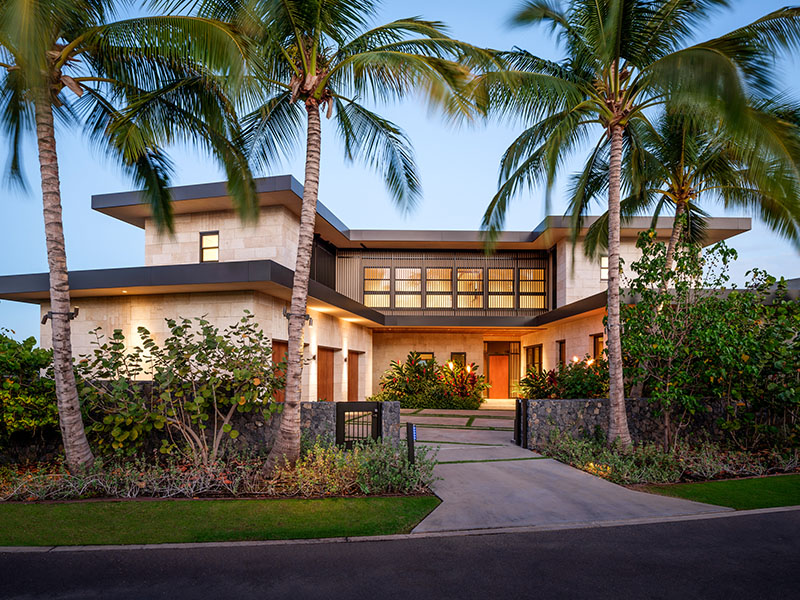

That led the landscape planner to work with a water budget, and he used most of it at the entry. There, he placed water-intensive gingers and heliconia for their color, scent, and deep green foliage that gives a lush and tropical feel.
Carefully placed coconut palms frame views from bedrooms and outdoor spaces. Below the lanai, Vita allowed kiawe and grasses to work their way up to the house. “The thing about designers is that they have to design,” he says. “Sometimes, the genius is to leave it be.”
The architect addressed scale and proportion in his arrangement and composition of living and transition spaces. “You come in from the auto court into a cozy foyer,” de Reus says. “Then you transition from compression to expansion into a larger volume that’s the main gathering space.”
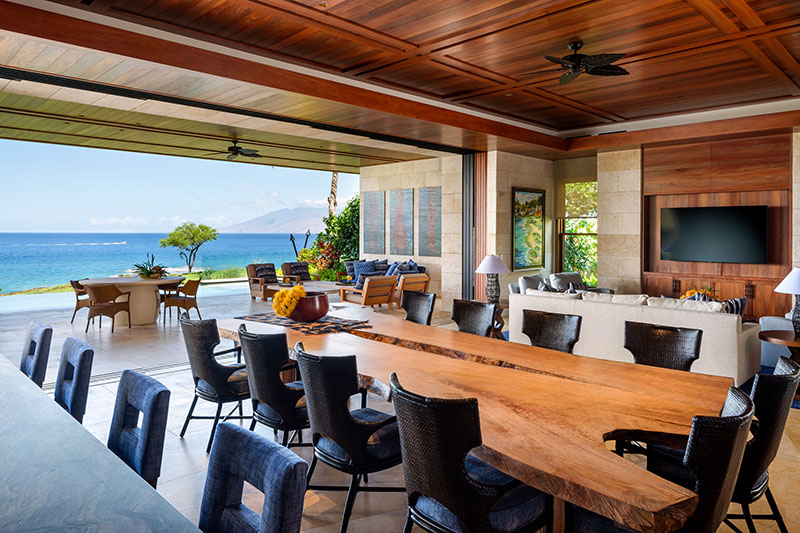

That larger area needed to be a comfortable fit for friends and family. The architect defined it by maximizing its opening for the most drama, merging interior spaces into exterior ones.
“Then you add the materiality. The client liked the use of rich woods,” he says. “We used a number of them on the interior because they’re dark and rich in character.”
While the coral stone cladding the home was imported, walls and ceilings are native ohia wood. Most of the interior furnishings were selected by Marion Philpotts-Miller and Anne Tanaka of Philpotts Interiors in Honolulu. Among the woods chosen for furnishings were ohia, koa, mango, and monkeypod. “You support your local craftsmen in the middle of a pandemic by having things made right on the island,” Philpotts-Miller says.
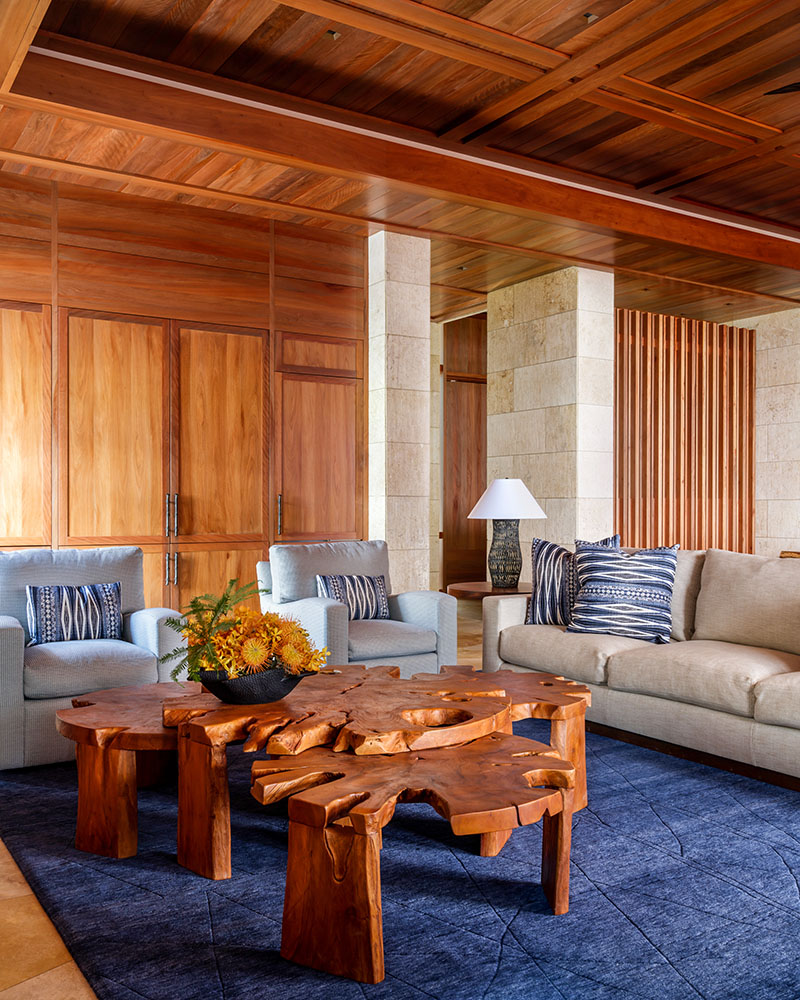

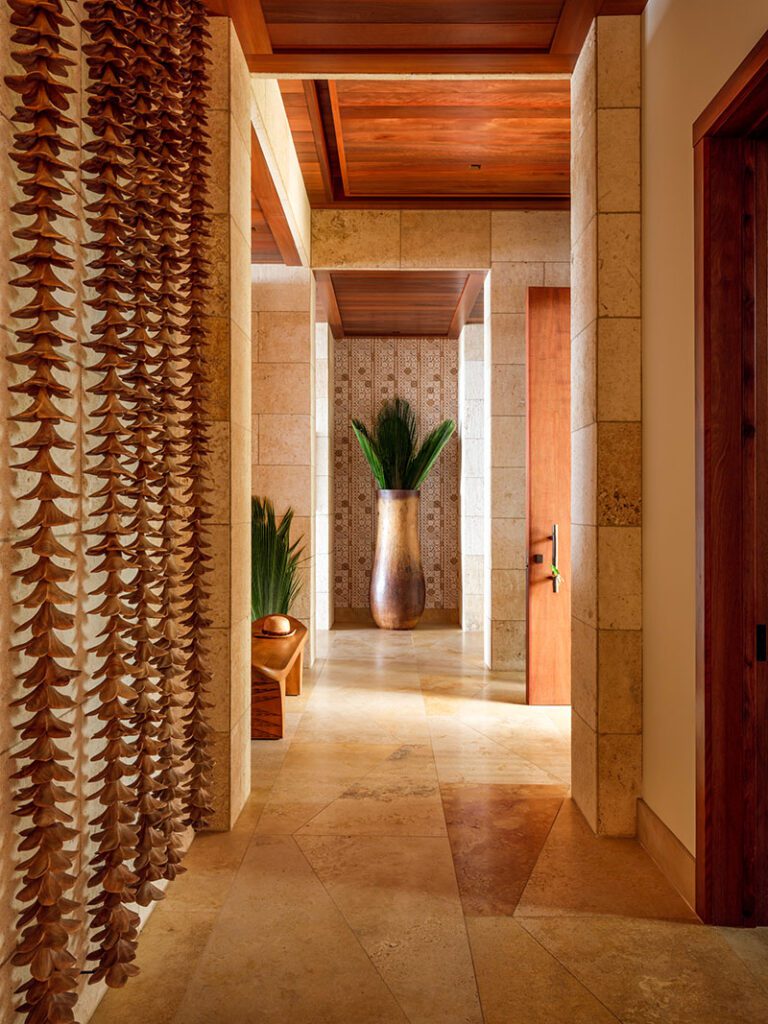



A cabinetmaker created the oversized, live-edge dining room table from the trunk of a local tree. The headboard in the master suite and the vanities in the bath are both koa, one of the most sought-after and overcut woods on the island. “It’s like royalty,” she says. “It has dark and medium colors, mixed.”
A sense of calm is the overwhelming takeaway from the interiors, and that’s no accident. “There are soulful and restful components, like a yoga and meditation area upstairs,” says Philpotts-Miller. “It’s a retreat where the clients can find quiet time—a nice approach to designing a vacation home.”
And if they feel a sudden need for drama, they can always step out into views of the Pacific.
Learn more about the project team
For more information visit dereusarchitects.com; philpotts.net


